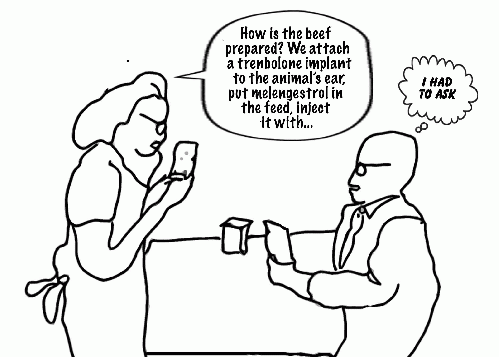It is no secret that our bodies and environment are swimming in estrogen. Puberty is occurring in children as young as eight and in 2010 babies in China were reported to be developing breasts. In 2011, the United Kingdom's Daily Mail observed that women's bra cup sizes were growing even when the women themselves were not gaining weight and speculated it was estrogen exposure. And frogs and fish are becoming "intersex" and losing their male characteristics from endocrine disrupters in the environment and waterways.
Over ten years ago, the routine administration of estrogen to women as they approach menopause and afterward (called hormone replacement therapy or HRT) was found to cause a 26 percent increase in the risk breast cancer, 41 percent increase in the risk of strokes, 29 percent increase in the risk of heart attacks and double the rate of blood clots.
Unfortunately, the public has a short memory. HRT is making a comeback even though it is such a cause of breast cancer, US cancer rates sharply dropped when women quit in 2002! It is also still billed as a fountain of youth despite its links to the "elderly" conditions of cataracts, urinary incontinence and joint degeneration as well as lung, ovarian, skin and gall bladder cancer.
But of course a lot of estrogen we are exposed to is "under the radar." Endocrine disrupters (chemicals which mimic estrogen) are found in plastics like BPA, petroleum based products, agricultural pesticides, herbicides and fungicides, detergents and cosmetics and even everyday items like furniture, carpeting and thermal receipts. Do you have Colgate's Total toothpaste or Ajax and Palmolive "antibacterial" dish detergents at home? Triclosan, the endocrine disrupter they contain, is considered so dangerous the state of Minnesota has banned it.
The US meat industry is also steeped in estrogen, using hormones like zeranol and melengestrol and the steroid trenbolone to fatten animals and increase profits. Zeranol is especially controversial. A 2009 paper in Anticancer Research says "Our laboratory has reported that long-term exposure to either Z [zeranol] or E2 [estradiol-17├Ä ▓] can induce transformation of human breast epithelial MCF-10A cells." Translation--it can cause breast cancer. Another paper reports that "breast irritation" can occur in people only exposed to the clothes of those working around zeranol! No wonder the European Union bans US beef.
Do you remember the outbreak of precocious puberty and breast development in children in Italy and Puerto Rico in the late 1970s and 1980s? A paper in Science of the Total Environment attributes the symptoms to "deliberate introduction of zeranol into livestock to enhance meat production." In both the Italy and Puerto Rico outbreaks the symptoms disappeared when the hormone-laced food was removed.
Zeranol is "banned for use in animal husbandry in the European Union and other countries, but is still widely used in the US," says the paper. "Surprisingly, little is known about the health effects of these mycoestrogens, including their impact on puberty in girls, a period highly sensitive to estrogenic stimulation." Another scientific paper called "Detection of Six Zeranol Residues in Animal-derived Food by HPLC-MS/MS" found clear drug traces in the food.
(Note: You can view every article as one long page if you sign up as an Advocate Member, or higher).






